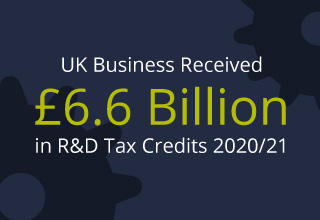Top 5 R&D Tax Credit Mistakes
As we return to some sort of business normality, many companies will use this phase to seek out new opportunities or to steal a march on the competition. For some, this might mean entering new markets, while others use it to improve their service or introduce innovative products.
HMRC incentivises businesses along this innovation process through the R&D Tax Credit scheme. This rewards companies that invest in research and development by providing a cash injection or tax bill reduction. Recently, the incentive has been under increased scrutiny due to abuse of the scheme by some advisors and businesses. HMRC have responded to this damaging trend by appointing an additional 100 staff to their R&D compliance team, ensuring greater capacity to review claims.
At Amplifi Solutions, companies often ask us to carry out a review of submitted claims to ensure they have made legitimate submissions in previous years. In some cases, there are no clear errors that may trigger an HMRC investigation. However, several of the reviews we conducted have identified some clear risks to the business.
Here Are The Top 5 R&D Tax Credit Mistakes
1. Misunderstanding Grants
Grants are a great way for SMEs to finance their projects. We’re always quick to point out to our clients any funds to which they may have an entitlement. However, grants complicate R&D claims. Certain grants mean that businesses must make a lower value claim and are also prevented from including certain costs, such as subcontractors. Unfortunately, we see many advisors making errors in this area, as they either haven’t understood the treatment of a grant, or they haven’t amended the submission accordingly.
2. Claiming for All Software and Data Costs
When the legislation was originally written for the scheme, both cloud and data hosting costs would not have featured for businesses. But as technology has evolved, this now tends to be a major cost for claimants. However, HMRC does not recognise this as a qualifying area. Thankfully, a reform to the scheme is expected to take effect from April 2023, after which these costs will become claimable. Frustratingly, at present, we still see many businesses submitting claims with these costs included.
3. Poor Detail in Technical Narrative
Perhaps the most critical area of the entire claim and the section which is most misinterpreted is the technical section. HMRC are clear in how they define qualifying R&D and expect to see a comprehensive report on how advancements were achieved. If HMRC either don’t understand the report, or fails to recognise the qualification, they have grounds to question, and potentially dismiss, the submission.
4. Overclaiming Employee Time
Many claims suggest a high proportion of an employee’s time was spent on R&D. We would appeal to businesses to avoid falling into the trap of apportioning 100% of anyone’s time to R&D. It is simply not possible for someone to spend all day, every day, on R&D, given their other task and project commitments. Similarly, overclaiming for staff who are in finance, procurement, or administration roles is also a red flag to HMRC investigators.
5. Misunderstanding Business Ownership
This comes down to the need for proper diligence on behalf of the claimant company. It’s a similar issue to the wrongful treatment of grants. The share ownership of a business can create a wealth of issues when understanding its treatment for R&D Tax Credits. For example, if a ‘large’ business owns over 25% of the shares, then the business could be given a different treatment. Similarly, ownership by an equity funder of over 50% will also trigger an alternative approach.
While there is no quick fix when it comes to making an R&D claim, it pays significant dividends to engage with advisors who have the breadth of experience and resources to provide expert guidance to the management team of your business.
Meet the Amplifi Team






